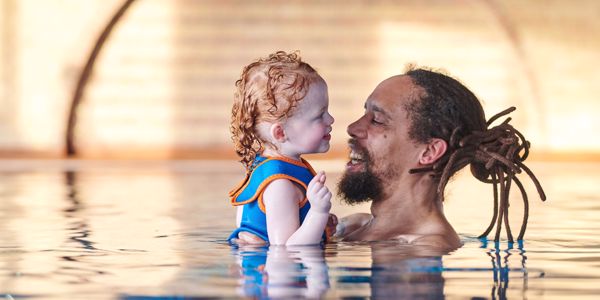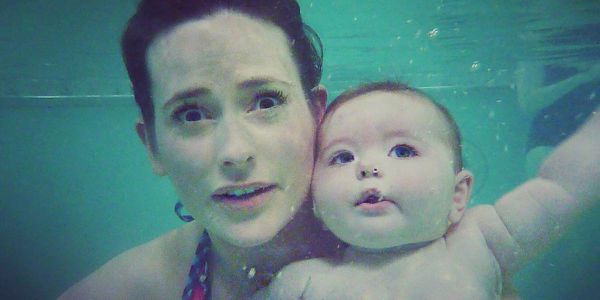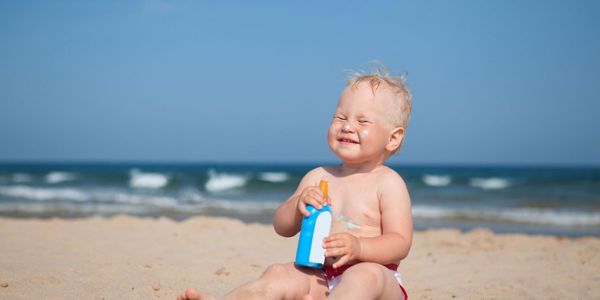Water is great fun for babies, especially on hotter days. But unfortunately, even as little as an inch of water can be very dangerous - so it’s really important to think hard when it comes to water safety for babies.
We’ve put together a list of tips below to help keep your baby safe around water!
Practice Proper Supervision
Being vigilant and practising proper supervision around water is the safest way to keep your baby out of harm's way. Regardless of whether your baby has had or is having swimming lessons, you should never leave them alone, in or near any body of water.
Age-Appropriate Swimming Lessons
While swimming lessons do not make children drown-proof, before the age of one, it is a good idea to take your baby to water play classes to help them get used to the water.
Once your baby is one, you can sign them up for age-appropriate swimming lessons.
It is important to remember that regardless of how many swimming lessons your baby has had, it is essential that continuous supervision remains.
Keep Your Baby Within Reach
Always keep your baby within your arm's reach. As stated by many safety experts, the best way to keep your baby safe is to practice “Touch Supervision” both in and near water.
At all times, your baby should be close enough for you to be able to reach out and touch them.
When swimming, get into the water with your baby. If you need to get out, take them with you. Even if it’s just for a moment.
Stay Above the Water Line
Secondary drowning, although rare, is a very serious condition. This can occur as a result of too much water being inhaled by your little one.
Try to keep your baby’s head above the water at all times. Any underwater submersions should be short and supervised.
Never Leave Your Baby Unattended
It’s a good idea to make sure there is a one-to-one ratio of adults and babies/young children.
In any and every situation, there should always be one adult responsible for one baby. If the responsible adult needs to step away, it is important that another adult takes their place so that your baby is never left alone. It takes only a few seconds unsupervised for a baby to drown.
Keep Home Surroundings Safe
When at home, after you have finished with the baby paddling pool or any other item that can hold at least an inch of water. Empty it and turn it upside down.
For home swimming pools, ensure pools are closed off - pools should be fenced off, with a gate that self-closes and self-latches. If the pool has a top, make sure this is secured down so there are no openings.
Safety Away From Home
Be aware of your surroundings when visiting local pools and while abroad. Familiarise yourself with the signs (especially when abroad, as these may be in a different language).
Check to see whether there is a lifeguard around the pool and if there are any slippery surfaces around. Scope out the pool so you know which end is deep, which is shallow and also look out for any broken tiles that may cause injury.
Flotation Devices and Inflatables
While flotation devices are often fun for babies, keep in mind that flotation devices are not life preservers.
Never take your eyes off of your little one, even if your baby is wearing floats.
This same rule applies to all inflatables. Never leave your baby unattended on an inflatable. And when using one, It is important to ensure that your little one is wearing appropriate buoyancy aids at all times.
Signs of Drowning in Children
Drowning is one of the most common causes of accidental death in children aged one to four.
Knowing and practising water safety for babies and children is crucial for parents and caregivers. Drowning is quick, silent and can happen in less than 30 seconds. For babies, this is even more important as little as an inch of water can be fatal. But drowning is often preventable.
It is a good idea to familiarise yourself with the symptoms of secondary drowning (as a result of inhaling water which can irritate the lungs and cause swelling - hindering the lung's ability to provide oxygen to the bloodstream)
Take your baby or child to the hospital immediately if they are showing symptoms of:
- Extreme fatigue or lethargy
- Difficulty breathing
- Mood swings or irritability
- Chest pain
- Persistent cough
- Fever
- Shortness of breath







